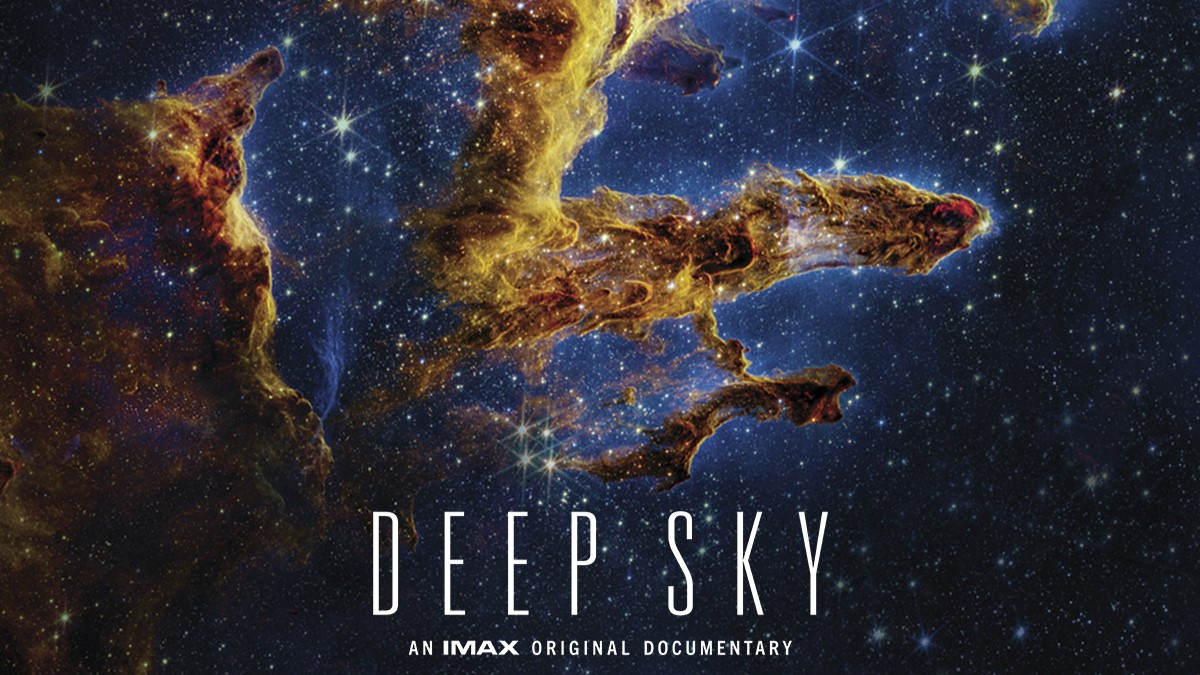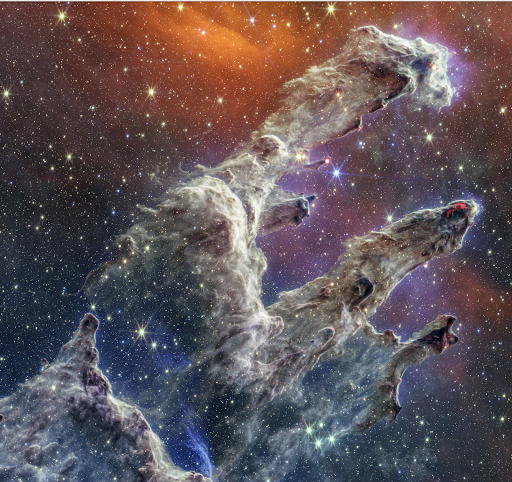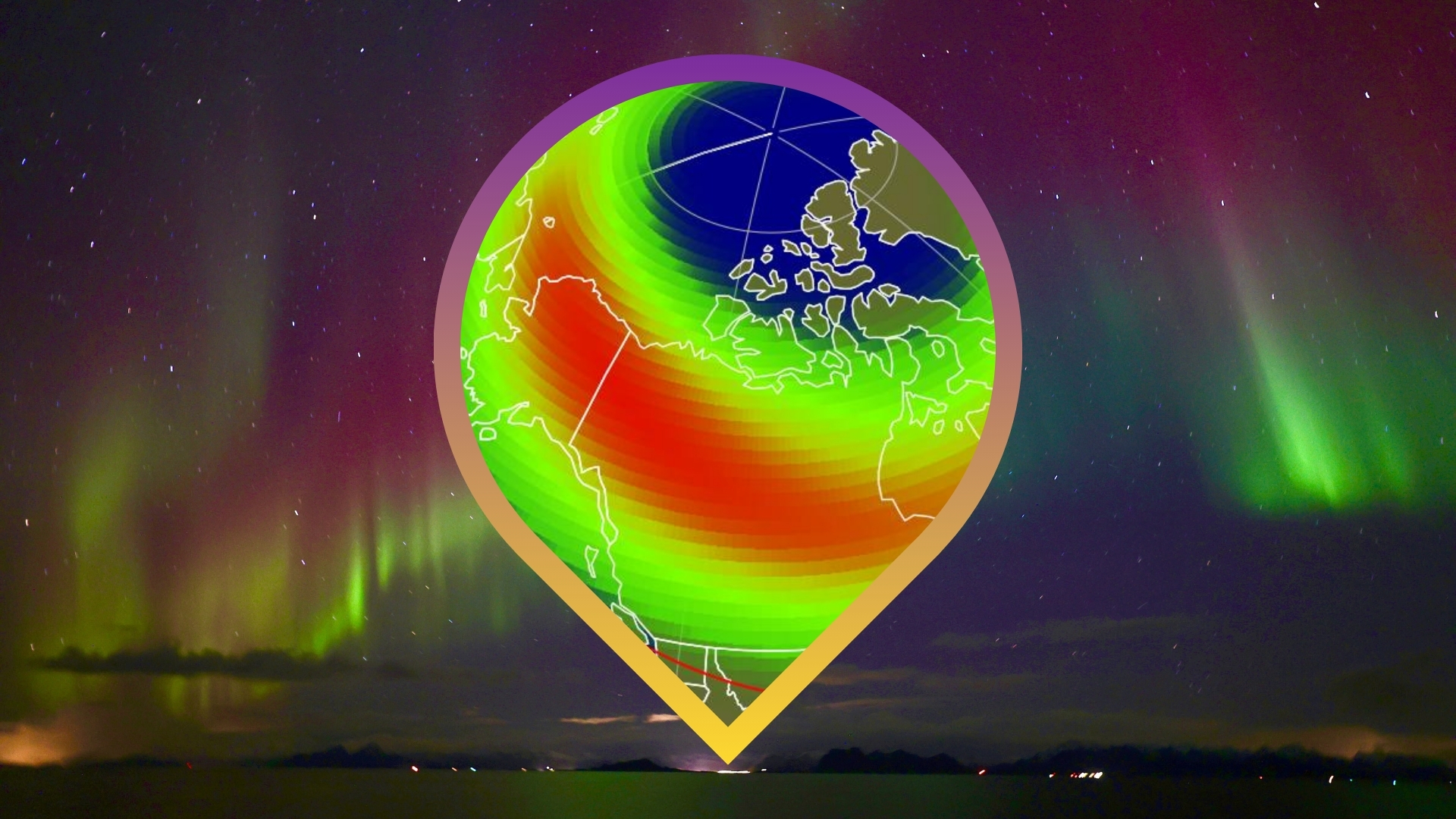How director Nathaniel Kahn brought the James Webb Space Telescope to IMAX with 'Deep Sky'
"There is this kind of power the images have. It really isn't from us. We're creating the context in which you can appreciate them, but we're not forcing it."

It was only a matter of time before the James Webb Space Telescope's vibrant repertoire of images and impressive backstory were turned into film, and director Nathaniel Kahn's enchanting "Deep Sky" is exactly that.
Walking into the theater, I wasn't sure what to expect from this movie. I'd already written so deeply about the James Webb Space Telescope (JWST) — from its anxiety-inducing preparations, to its thrilling launch, to its journey a million miles from Earth, to its first glimpses of the universe and to everything after. Then the lights dimmed, the movie began, and the first scene absolutely floored me.
"Deep Sky" opens with the JWST floating dutifully at its home in space, Lagrange Point 2, a gravitationally balanced spot just between the Earth and sun. Except, in this scene, you can't see the Earth, nor can you see the sun. You can't really see any part of our solar system, for that matter; only a background of deceptively small, faraway stars and an otherwise vacant universe. In IMAX nonetheless.
That visual starkly reminded me that the space between our planet and our host star is incredibly, unimaginably huge; that there is no diagram of L2 which can truly depict this level of emptiness. I was then plunged into reflection about how isolated and cold the JWST is out there right now, and felt a little sad. "I wanted that first shot to be a vast universe; tiny telescope," Kahn told me over the phone. "Even though the JWST is a really, really big thing with a sunshield the size of a tennis court, it is miniscule."
Related: The James Webb Space Telescope shines in trailer for new IMAX film 'Deep Sky' (video)
When Kahn first conceived of this film, he imagined it as a technical story. One of mechanics, focused on the challenge of building a telescope that uses a package of high-tech infrared equipment to show us what our eyes, and many of our machines, simply can't see — things like details of cloaked star births, images of gravitational warps in the fabric of spacetime and atmospheric data of alien worlds.
Human vision can't detect wavelengths that fall outside the visible spectrum, and that includes infrared wavelengths. But patterns of distant light in the cosmos, coming from ancient stars and galaxies rich with stories of our universe's past, stretch out by the time they reach our telescopes. Once tighter, bluish wavelengths turn to looser, infrared ones (This effect is known as redshift.)
Breaking space news, the latest updates on rocket launches, skywatching events and more!
"All these incredible visions of the universe that you see in this film, they actually exist. We just can't see them," Kahn said. "And if that isn't an example of the fact we don't know everything, I don't know what is."
After all, the $10 billion machine took decades to create, as its creators often needed to invent new technologies to outfit what was meant to be an observatory with unprecedented capabilities. "I felt, at some level, that I was documenting what it must have been like in the Middle Ages to attempt to build a cathedral," Kahn remarked. "The absolute limit of what is possible."
And, to some degree, this is a technical story.
'The aspiration'
A solid amount of "Deep Sky" focuses on how the JWST had exactly one shot to make it to L2, and one shot to open its eyes to the infrared universe. Unlike with the Hubble Telescope, which sits in our planet's orbit and was even serviced back in the day when issues arose, scientists knew they wouldn't have an opportunity to really, physically fix the JWST once it left the ground. "That raises the stakes," Kahn said.
Stunning CGI sequences at the film's beginning show every little step the JWST had to take upon departure — the unfurling of its solar array, deployment of its shimmering silver sunshield (meant to keep it protected from solar heat, which would completely interfere with delicate infrared data) and much more.
"We were very committed from the start to using as many actual images from the telescope as possible," Kahn said. "However, there are things which we can't see." And one of those things, perhaps the one the JWST team wished they could see the most, is the telescope getting settled in space.
Fascinatingly, these CGI effects were generated by a YouTube creator named John Boswell, more famously known as melodysheep. "Deep Sky" is Boswell's first major film, even though he'd quickly risen to massive popularity among space enthusiasts on YouTube thanks to his brilliant space shorts, such as "Timelapse of the Future," a must-watch in my opinion.
"I asked the son of a friend of mine, who is studying to be a computer animator and is enormously talented," Kahn explained, "'Would you be able to, you know, help me with this? He was like, 'no, no it's not my thing. I don't do those things. Actually, space is quite difficult. And there's really only one person out there who you ought to try to see if you can find out who it is. I don't even know who it is. It's this thing called melodysheep.'"
So Kahn called up "melodysheep," and Boswell replied: "Let's do it.'"
Together, along with guidance from NASA scientists and experts at the Space Telescope Science Institute, the duo worked to create as realistic a visual effects sequence as possible. "I have no doubt that whatever John wants to do, the big space movies will come calling," Kahn said.
And soon enough, "Deep Sky" turned into a story with two parts. "One, the dream; the struggle, the aspiration, and two, the payoff."
'The payoff'
On July 12, 2022, the JWST returned its first information about the cosmos to us — images of a warped deep field, two nebulas and a galactic gaggle as well as the atmospheric spectra of alien planet WASP-96b.
"Seeing the images come down was the moment when I realized this can be a film on the IMAX scale, that begins to give people a sense for the absolute vastness of what's out there," Kahn said.
The second half of "Deep Sky" is populated with these beautiful JWST images, as well as others we've been seeing on the internet for about a year — except in extremely high-resolution and blown up so much they exceed your field of view. Even CGI sections Boswell made to accurately represent the JWST's exoplanet muses were painted onscreen with such grandiosity it was hard not to feel overwhelmed.
"There is this kind of power the images have. It really isn't from us. We're creating the context in which you can appreciate them, but we're not forcing it," Kahn said.
In the background, award-winning actress Michelle Williams narrates what we see, which, Kahn admits, was a bit of a deviation from his usual filmmaking blueprint.
"Many of my films are done just through putting together interviews with people or encounters with people," he said. Or in other words, there is no doctored narrative.
"In this film, it became very clear to to me, and to the editors that I was working with, that we had to have a narrator because there's just too much context to create, and too little time with only 40 minutes, and too many sort of technical things that had to be really clear," he said. "And, beyond that, it needed to be a story."
"There was only one person that I ever wanted to narrate the film, and that was Michelle," he continued. "I heard her voice as I was writing the narration, and she immediately understood the tonality that we wanted for it was much more conversational."
Admittedly, some of the narration started to get slightly repetitive to me in some parts, as there are only so many ways one can reiterate that the JWST can peer into hidden reaches of space and revolutionize science. Rather, the most touching parts of this film came from conversations outside the narrative; interviews Kahn conducted with the people who actually made the JWST.
Deputy Project Scientist of the JWST, Amber Straughn, for instance, gets teary-eyed while talking about the Carina Nebula, pondering how this mesmerizing structure was always "out there." Senior Project Scientist of the JWST, Nobel Prize-winning John Mather, contemplates how we're part of the universe in the most literal sense. We're recycled, he says, made of immortal atoms that originated someplace else in the cosmos. But, Mather adds, "that's okay."
"There's something about his reassurance that feels incredibly comforting to me," Kahn said. "Suddenly the great, vast emptiness of space feels almost like a warm blanket."
The film's music, composed by Paul Leonard-Morgan, was a new exploration for Kahn as well, as the director says he typically works with classical scores. But, while watching the film for the first time with the classical score, he recounted, "Paul was saying: 'You know, I think we need more electronica.'"
The human psyche
Looking at the images on the IMAX screen, Kahn says, "the division that seems to exist between art and science begins to dissolve."
On one hand, "Deep Sky" might have you thinking about how light traveling at 186,000 miles a second would take three years to get from the bottom of the Pillars of Creation to the top. Though on the other, as Kahn puts it, it might remind you of great, abstract canvases. It feels like, though art and science (particularly astronomy) have converged for a long time, the JWST continues to emphasize the relationship.
Artist Ashley Zelinskie, for instance, is behind an art exhibit dedicated solely to the JWST's first groundbreaking images. She'd combined digital mediums such as virtual reality with classical fine art forms like sculpture and color theory to produce an immersive experience for guests. And I wonder whether this surge in thinking about art alongside the JWST is related to there being few adjectives to explain what it feels like to witness what the observatory has delivered. The meaning accompanying these images is literally existential, often personal, and maybe beyond language.
"They seem to really come from the same place in the human psyche," Kahn said of art and science. "It's really a filmmaker's dream."
In the grand scheme of things, Kahn says he hopes "Deep Sky" comes across as a dialogue about our place in the universe and our intrinsic desire to explore. Perhaps, he hopes, it can also push us in the direction of feeling comfortable with uncertainty, increasing our willingness to ask questions even when we think we know the answer. "People from all different backgrounds and all different walks of life worked together to create this thing," he said. "Just because we are curious.
"Yeah, that gives me enormous hope for humanity."
"Deep Sky" is now playing in select IMAX theaters. See where to catch a show here.

Monisha Ravisetti is Space.com's Astronomy Editor. She covers black holes, star explosions, gravitational waves, exoplanet discoveries and other enigmas hidden across the fabric of space and time. Previously, she was a science writer at CNET, and before that, reported for The Academic Times. Prior to becoming a writer, she was an immunology researcher at Weill Cornell Medical Center in New York. She graduated from New York University in 2018 with a B.A. in philosophy, physics and chemistry. She spends too much time playing online chess. Her favorite planet is Earth.


